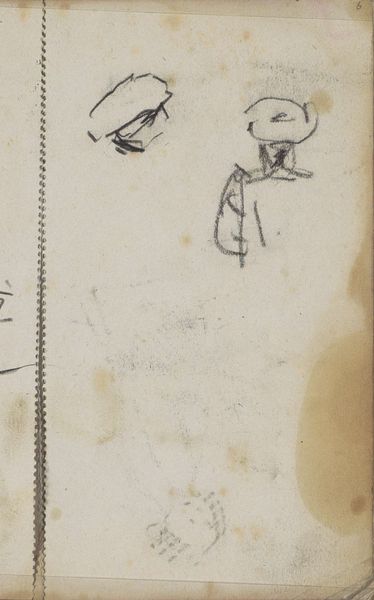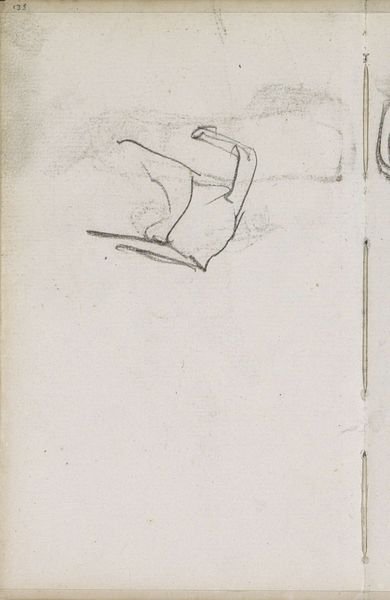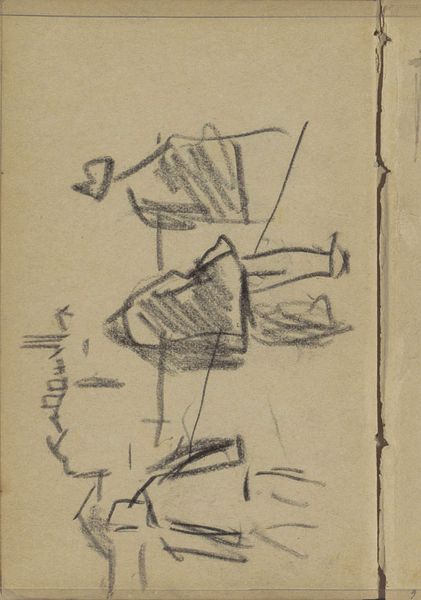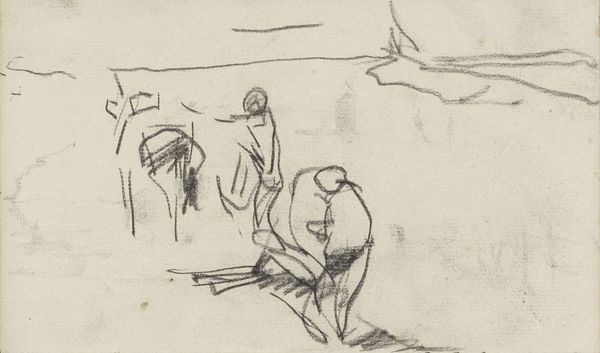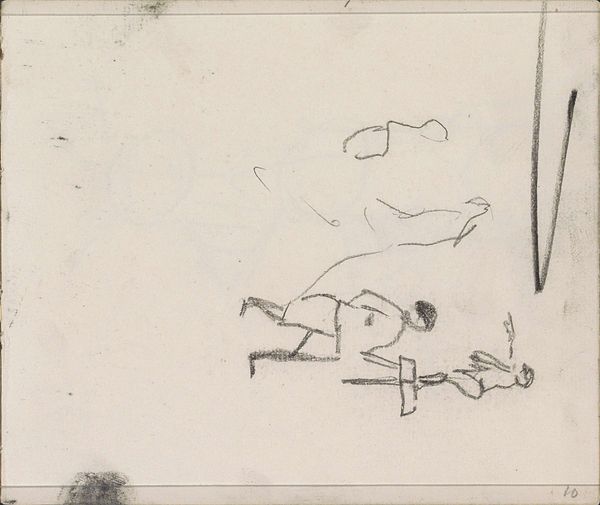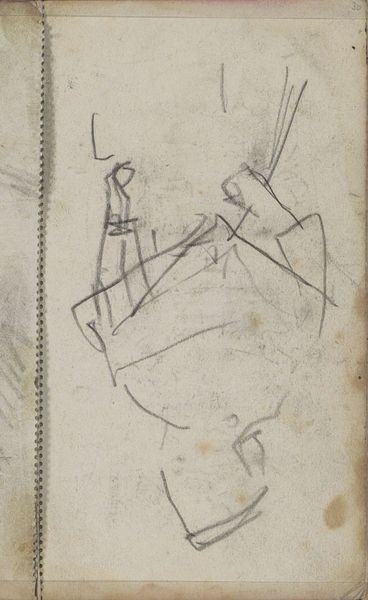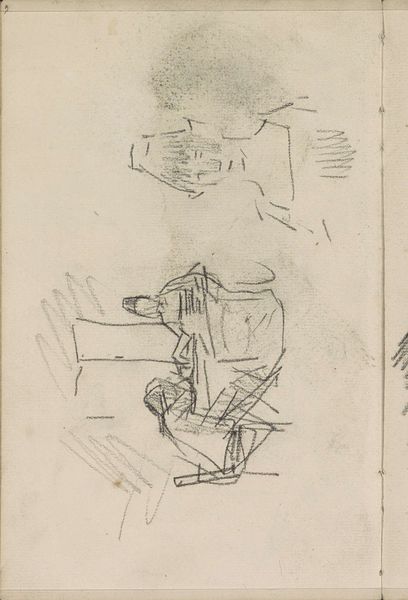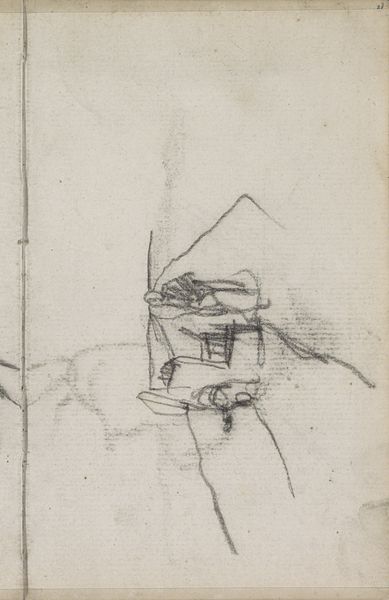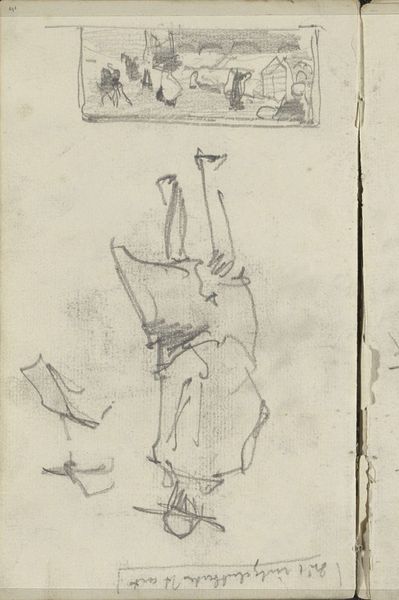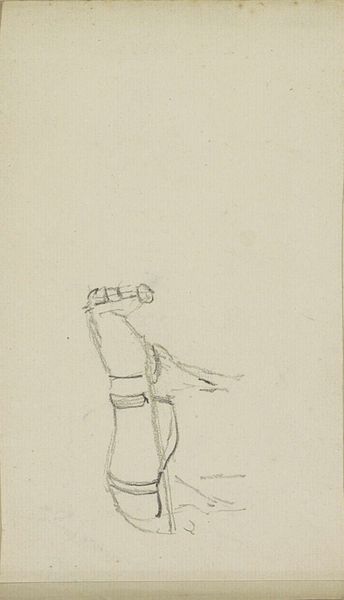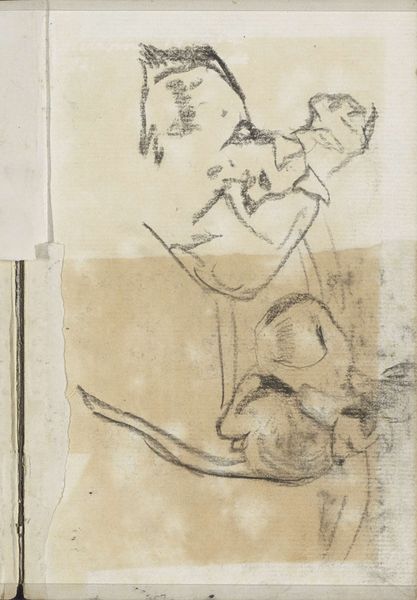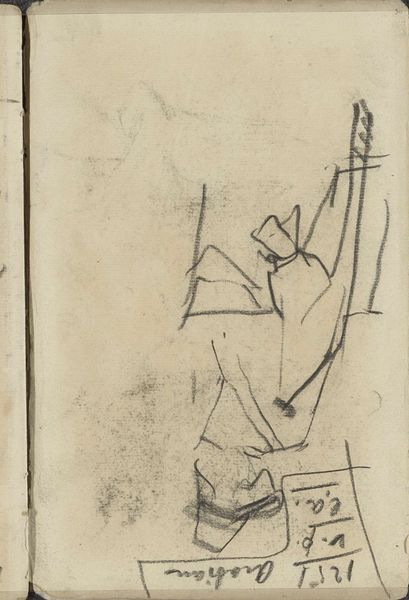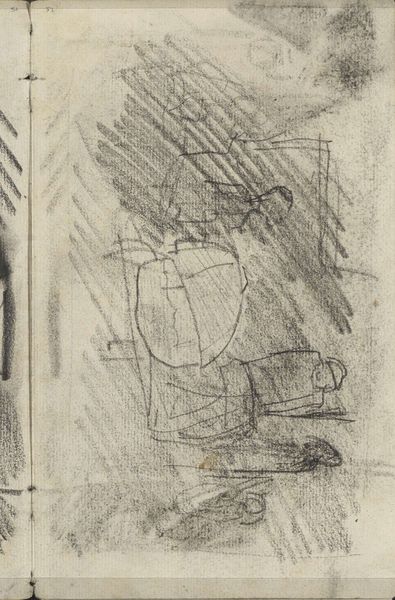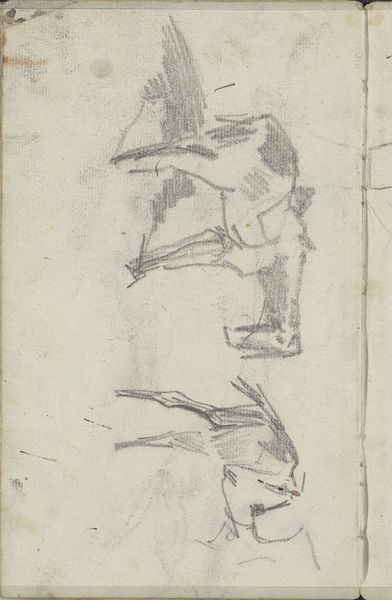
Dimensions: height 191 mm, width 113 mm
Copyright: Rijks Museum: Open Domain
Curator: These sketches are by George Hendrik Breitner, titled "Figuurstudies," created sometime between 1880 and 1923. It's a pencil drawing housed here at the Rijksmuseum. Editor: There's a quiet intimacy about this work; it feels like we're peeking into the artist's private thoughts. The lines are so delicate, almost hesitant. There's a vulnerability here. Curator: Exactly. These are figure studies, after all. Breitner isn't aiming for polish or perfection. He’s capturing fleeting moments, exploring form, and likely using it as an exercise to improve his abilities. You could almost see it as visual note-taking. It does seem to echo Dutch Golden Age art ideals about everyday subjects and simplicity. Editor: I see that, and I'm drawn to the representation of the seated figure – notice how the chair and the person almost meld, suggesting a sense of belonging or even confinement. Was Breitner intentionally making a statement about the individual's role in society, the constraints placed on people based on class or gender? Curator: That’s a really interesting angle. I hadn't considered it quite so explicitly. Although not as overtly political as some other artists, he often depicted scenes of daily life, capturing the realities of the working class, so it would be logical for those observations to permeate this medium as well. There’s a certain melancholy. The lack of detail, the quick strokes—it almost suggests transience, like these people and moments are slipping away. Editor: Or is it about being unseen, deliberately obscure? The faces lack specific detail. They become Everyman and Everywoman, symbols perhaps of larger groups or classes of people facing societal pressures during the late 19th century rise of modernity? Curator: Possibly! In viewing Breitner's work, we encounter symbols that reflect a broader human experience—observations and fleeting moments—the same as the ones that reflect historical themes that intersect politics, gender, and class. Editor: It's like excavating the past and revealing those lingering echoes, using these Figure Studies as prompts for empathy, not judgment. Curator: Indeed, allowing them to have lasting meaning by bringing in historical contexts to understand his intentions, even now, and through future art. Editor: Exactly, art continues, memory carries forward.
Comments
No comments
Be the first to comment and join the conversation on the ultimate creative platform.
